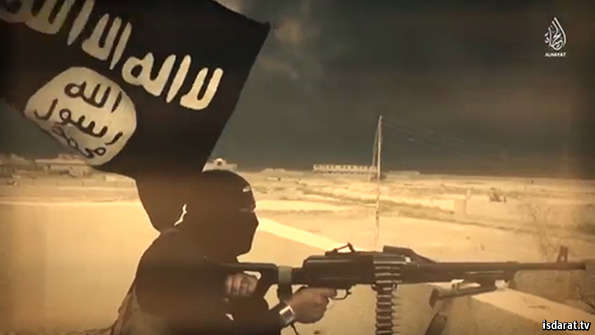People call it the French version of 9/11. Paris, just like terror-shrouded Sinai and Beirut, occupied the latest global headlines when the capital of romance turned into a living hell last Friday. Shootings and bombings swept the city in theater, stadium, restaurant, and street corners, leaving hundreds of civilians dead and wounded. If the Charlie Hebdo shooting was infuriating and revolting, there is something more agonizing and heartbreaking about the Paris Black Friday. It brutally mirrors the perplex and twisted nature of political, economic, and religious conflicts, both local and global, in our modern world.
Other than spreading extremist fundamentalism and terrorism around the globe, the ISIS is nothing like al-Qaeda, the mastermind that left a permanent scar on the soil of America. Apparently, ISIS has a much more ambitious and clear plan – it shows strong desire for land and it desperately wants it now. With its ultimate goal of establishing a powerful caliphate, the militant group even envisioned a tempting plan to reshuffle the order of world financial and monetary system. It sounds just like other absurd conspiracy theories on the market at the first sight, but how the ISIS theoretically articulated and defended its own vision of the new financial order explicitly reveals its devouring ambition of conquest.
In a lengthy propaganda video released in early September, the ISIS fiercely condemns the global dominant position of United States dollar, accusing the U.S. Federal Reserve of enslaving the world economy and the greenbacks of being “evil and unchecked.” Instead, the ISIS proposes a bold alternative: replacing paper money with its own legal tender money called gold dinar. Full of iPhone-commercial-style shots boasting of its modern and state-of-the-art mintage, the video purports to show the superiority of gold standard and challenges the status quo of U.S. dollar as the reserve currency used by many countries. The ISIS also claims that it’s now collecting its oil revenue only in gold, even though most of oil money is still paid in the U.S. dollar.
(A screenshot of the ISIS propaganda video. Source: The Economist/YouTube)
Whether the gold currency remains legal is left to question, not to mention its practicality as commodity money. People has abandoned precious metals as money long time ago and implemented financial systems around paper money for centuries. In fact, the world hasn’t abandoned gold standard until the U.S. brought the convertibility of the U.S. dollar to gold to an end in 1971. In theory, pegging the dollar to gold can guarantee price stability and prevent inflation in the long run, however, the history has proven that’s not quite accurate.
While most economists nowadays agree that gold standard is a bad idea, recent political debates around the revival of gold standard merely reflects the dissatisfaction towards the Federal Reserve’s power of setting the interest rates and printing money. The gold standard can explicitly limit the size of the economy and the flexibility of government monetary policies. When the central bank needs an easy monetary policy, it will be restricted to do so because the money is linked to how much gold it has – any over issue of paper money can risk bank runs or even the collapse of the economy.
Looking back through the history, precious metal was replaced by paper money, and today paper money is gradually being replaced by checking accounts and credit cards. In his Night Journey, the Prophet Muhammad was awoken by an archangel, received revelations from the God, and envisaged a caliphate ruled by the Koran, but he has probably never imagined the evolution of monetary systems. Whether it’s the 7th century or the 21st century, there is no point of going back to the time when we link our economies to precious metal. If there’s any benefits in maintaining such system, it has simply become obsolete and impractical to fit in our modern world.

Leave a Reply
You must be logged in to post a comment.